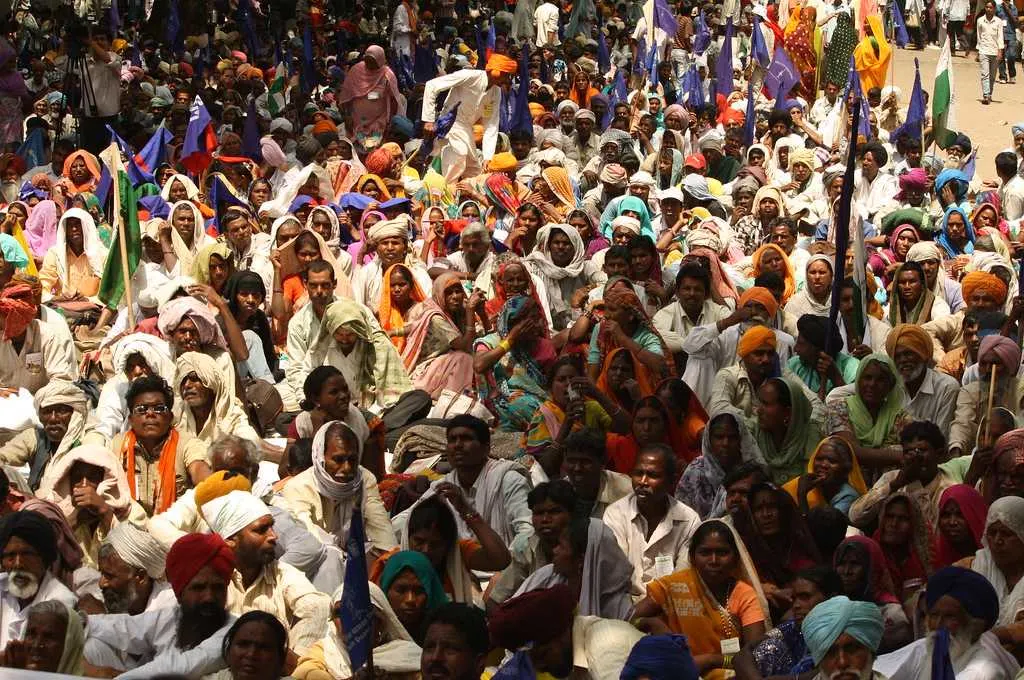In 2022, the Asian region experienced a total of 81 climate- and water-related disasters. India suffered the third-highest losses in the region on account of flooding, amounting to more than USD 4.2 billion. In addition to this, extreme heatwaves left 90 percent of Indians more vulnerable to health issues and food shortages. The nation’s key sectors, such as agriculture and manufacturing, also suffered an income loss of USD 159 billion due to extreme heat. Despite this, both domestic and international funding for adaptation—which focuses on adjusting to the expected impacts of climate change such as increase in erratic rainfall patterns, droughts, and change in mean temperatures—has remained scarce.
The majority of the Global South finds itself in a similar situation. As per the Climate Risk Index, countries in Asia, Africa, and South America are some of the most affected by climate change. Yet, there isn’t enough focus on funding adaptation efforts, especially on international forums. The Green Climate Fund, too, which was established to provide funds worth USD 100 billion to developing nations by 2020, had received only 10 percent of its pledged amount as of 2019.
In this context, the Harnessing Philanthropy for Climate Action policy brief, released in July 2023, highlights the critical role philanthropy can play in adaptation funding in the Global South. It points to how the G20 forum—comprising 19 countries and the European Union—provides a unique opportunity for collaboration among member countries to address these challenges collectively. This platform can facilitate discussions, commitments, and coordinated actions that cater to the adaptation needs of developing countries more effectively, setting the stage for meaningful progress in the face of climate change. Here’s what the policy brief envisages:
1. North–South philanthropic partnership
As adaptation measures are generally concentrated at a local level, there is a lack of visibility of suitable options for investment in climate adaptation strategies in developing countries. Due to the highly localised nature of adaptation efforts, international donors are also often unfamiliar with state actors and implementing stakeholders. To overcome these barriers, the G20 members can create an adjacent ‘Philanthropy 20’ platform, through which they can help global financers connect with local actors as per their requirements. The common needs for climate action can be discovered through dialogue and funds can be diverted accordingly.
2. Joint research
Non-availability of data regarding impacts of climate change is a big concern in the Global South. The ratio of research on climate change in the Global North to that in the Global South is 3:1. This lack of data hinders planning for climate action in the Global south, especially on international platforms.
This disparity is largely due to lack of finance and technology to execute micro-level research. However, philanthropy can fill the gap by funding collaborative research projects that focus on mutual learning between the G20 members. This research can contribute to building a repository of best practices for effective climate action. The studies can also include civil society organisations and practitioners to ensure that local experiences and voices are taken into account.
3. Mainstream local terminology
It is crucial to develop a climate narrative based on local languages and terminologies. This can also help philanthropists better understand local contexts for climate action and also empower communities to contextualise the impacts of climate change in their lives. Local media can be an effective tool in mainstreaming such local climate lexicons, especially in a diverse country like India that has multiple languages and cultures. G20 countries can then share best practices with one another on developing standardised classifications for climate change.
4. Mass behavioural change campaign
In order to promote sustainable lifestyles for mindful consumption—as put forth by India during COP27 through its LiFE initiative—G20 can step up efforts to drive a mass behavioural change campaign. It can mainstream modifications to lifestyle such as turning off electronics when not in use, using water mindfully, and restricting the use of plastic. These recommendations, which are part of the LiFE initiative, have the potential to save USD 440 billion globally by 2030. Philanthropists across G20 countries could help build the narrative around sustainability through the adoption of common pledges and by leveraging the strength of social networks.

Recommendations to the G20
Here are some key focus area recommendations mentioned in the brief for G20 to direct philanthropic funding towards:
1. Climate-smart agriculture (CSA)
CSA incorporates sustainable practices into agriculture and aims to make it more climate-resilient. For instance, it looks at using crop varieties that are more resistant to extreme temperatures and erratic rainfall patterns. If adopted, it helps increase efficiency of agricultural systems, ensure food security, and prepare for current and future consequences of climate change.
While governments need to bolster institutional infrastructure to promote and adopt CSA, philanthropy can provide the much-needed support, specifically for small and marginal landholders to help them access credit as well as technical assistance. For G20 specifically, the recommendations highlight:
a) Combining philanthropic capital to implement and scale CSA in the Global South: Focusing on research and development of indigenous varieties that are climate-smart and building a market and supply chain infrastructure for such crops.
b) Supporting community-based organisations to leverage the strengths of small and marginal farmers: Along with CSR funding, philanthropic grants can help farmer producer organisations (FPOs) with technical know-how, establishing market linkages, and developing business plans so that they can become sustainable sources of income for small and marginal farmers.
2. Credit for small entrepreneurs through blended finance
For low-income regions and marginalised groups, accessing sufficient funding for adaptation is a major hurdle. However, blended finance offers a solution. It can be used to experiment with different financial tools to support impact-driven projects, such as those focused on climate change. For one, philanthropic funding can be leveraged to cushion certain risks that banks and private investors might face when it comes to giving loans or providing capital to micro-entrepreneurs who may not have a credit trail.
Philanthropic funding instruments such as flexible returnable grants and first loss default guarantees, for example, can be used to support such climate-focused micro-businesses. Private foundations can also use catalytic financing to encourage impact investing and partner with the private sector. Additionally, philanthropic funding can aid the public sector in mitigating the risk associated with innovation in the field. This will further encourage investment by the private sector while simultaneously promoting the development of new solutions.
3. Climate-resilient infrastructure
With the increase in climate-change-induced disasters, it is crucial to focus on rehabilitation of climate-sensitive zones and development of climate-resilient infrastructure. This can be done by integrating social security measures and philanthropic capital with government schemes. In India, MGNREGA provides one such collaborative pathway. The scheme has been offering unskilled manual work to rural households in India since 2006 and is a major source of relief for communities in times of distress such as droughts. It also has several environmental benefits as several activities under the scheme are related to restoration of natural resources such as water, land, and trees. The preservation of these assets by communities can further help them enhance their income in the long term. Philanthropic investment in such climate-resilient infrastructure is critical and can be adapted and replicated in other regions by governments as well as the private sector.
4. Digital climate-risk-informed toolkit
To be better prepared for any climate-related scenario, a climate toolkit that can anticipate risks could prove crucial, especially for the Global South countries that are disproportionately impacted. G20 members can support the development of a digital database for this toolkit that helps capture granular data and accurately predict micro-level changes and the impacts of climate change in a particular region. Philanthropists can fund projects for this research to be carried out so that the database enables real-time information exchange and provides farmers with the latest information. Such a digital toolkit can also highlight the most climate-vulnerable areas so that donors can allocate funding to these regions.
5. Social innovation hackathons
Social innovation hackathons create the opportunity for philanthropists, civil society organisations, policymakers, and other stakeholders to come together and maximise their impact through sharing of knowledge. Such platforms can be extremely beneficial for nonprofits to forefront local innovations and connect with global funders who they may not have access to otherwise. Social innovation hackathons can further provide mentorship to different innovators across all G20 countries and help scale these innovations at the G20 level.
6. Sustainability in urban centres
As cities face worsening heat conditions, it’s crucial to incorporate sustainable practices while planning to increase their adaptive capacities. Urban planning initiatives, therefore, should prioritise nature-based solutions such as green and blue spaces. Public–private entities and philanthropists can partner to develop such resources in urban centres, especially in low-income areas that may need energy solutions.
This article is based on the Harnessing Philanthropy for Climate Action policy brief by Sukhreet Bajwa and Deepa Gopalakrishnan.
—





